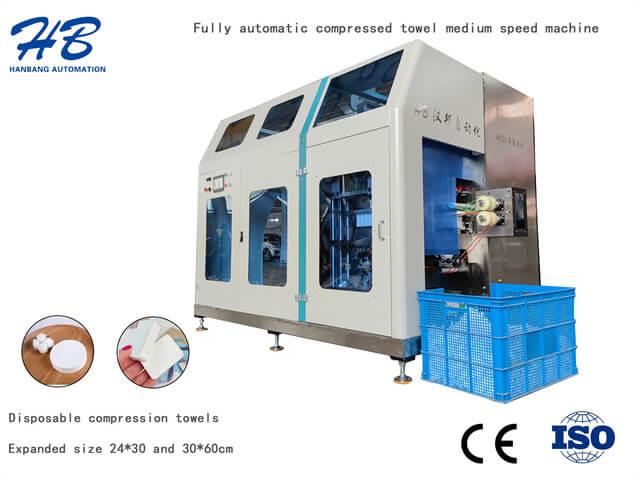Author:HB Nonwoven MachineryFROM:Compressed Towel Machine Manufacturer TIME:2023-11-20
Installing a Non Woven Lamination Embossing Machine

The non woven lamination and embossing machine is a vital equipment in the hygiene products industry, specifically for the production of diapers and sanitary napkins. This machine plays a crucial role in enhancing the functionality and comfort of these products by laminating different layers of materials together and creating unique embossed patterns. Installing such a machine requires careful planning and considerations to ensure smooth operations and optimal product quality. In this article, we will explore the process of installing a non woven lamination embossing machine.

Before installing the machine, it is essential to prepare the site adequately. This includes selecting an appropriate location with sufficient space and access to utilities like power and water. The floor should be clean and level to provide a stable base for the machine. Additionally, necessary safety measures should be implemented to ensure the well-being of the operators during installation and operation.

Once the site is prepared, the next step is to place the machine in the designated area. The machine should be positioned in a way that allows easy access for maintenance and operation. It is crucial to follow the manufacturer's guidelines regarding the distance between the machine and other equipment or walls to prevent any interference or safety hazards during operation.
The non woven lamination embossing machine requires both electrical and plumbing connections for proper functioning. A qualified electrician should handle the electrical connections, ensuring that all wiring is correctly installed and grounded. Similarly, a plumber should connect the necessary water supply lines and drainage system in compliance with local regulations and safety standards.
After the machine is properly placed and connected, it is essential to calibrate and test its functionality. This involves adjusting various settings and parameters to ensure accurate lamination and embossing processes. The machine should undergo rigorous testing to verify its performance and identify any potential issues that may require troubleshooting or adjustments before production begins.
Once the machine is operational, it is crucial to provide comprehensive training to the operators who will be responsible for its day-to-day operation. Training should cover machine controls, maintenance procedures, troubleshooting techniques, and safety protocols. Well-trained operators are essential for efficient and safe machine operation, minimizing downtime and ensuring product quality.
Quality assurance is a critical aspect of the installation process. Regular inspections and quality checks should be implemented to identify any defects or deviations from the desired product standards. This ensures that the non woven lamination embossing machine is producing products of consistent quality and meets customer expectations.
After installation, it is important to establish a regular maintenance schedule for the machine. This includes routine cleaning, lubrication, and inspection of key components. Additionally, manufacturers or authorized service providers should offer technical support and assistance for any repairs or issues that may arise during the machine's lifespan.
The installation of a non woven lamination embossing machine is a complex process that requires careful planning and attention to detail. Proper site preparation, machine placement, electrical and plumbing connections, calibration, operator training, quality assurance, and ongoing maintenance are vital steps in ensuring the smooth operation and optimal performance of the machine. By following these steps, manufacturers can enhance productivity, improve product quality, and meet the growing demand for hygiene products in the market.





